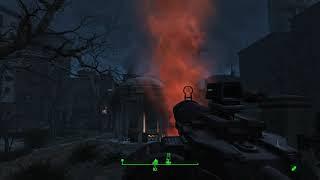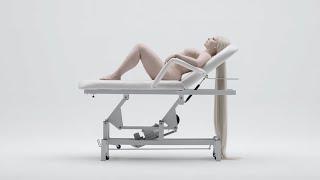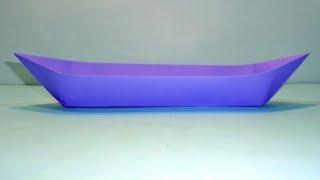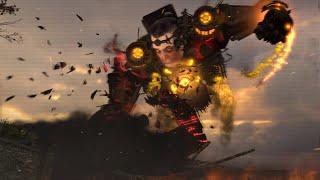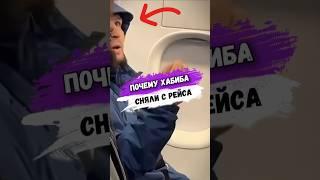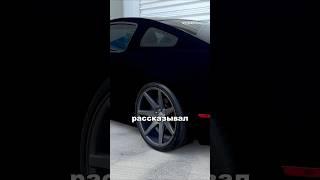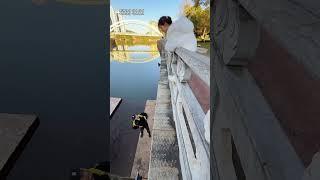
Can We Recreate CLASSIC Tri-X Film? Part 1
Комментарии:

I like the 3rd one but that is cool you made your own developer which is interesting. Have you tried ilfosol and if so how do you like it? I think i still have tri x from the 90s or early 200 s that was given to me.
Ответить
Thanks for this test. My favorite developer that I've tried with Foma 400 is diluted FX55 (1+19) at EI 400. I'd be curious if the contrast with DDX would be better controlled at 1+9, and perhaps with minimal agitation.
Ответить
As always I enjoyed your analysis. I have adopted your HC110/bit of Rodinal stand development for Formapan and it gives a really wonderful look. Always use this and usually stand develop my Formapan. I never was a fan of Tri-x even when I was a part-time photojournalist for newspaper, I generally used pan-X and when possible panatomic-X. I do not like grain. When Kodak came out with TMAX I switched to that when I needed 400 film. Based on cost I switched to delta-400 when I need 400. But I love slower "almost no grain" films. My favorite film of all time was Tech-Pan. However, not very useful for newspaper photography for most assignments. Thanks for your work. I have gotten a lot of great ideas from your work.
Ответить
Im still mourning genuine Tri-X and Im very angry when young generations dont know that is not the same recipe. From my tests HC110 with Fomapan 100 is the best combo, so I would try your FRUD with Paranol S
Ответить
Nice one! Looking forward to the next video for the comparison!
Would you like to try XTOL or similar developers?

Great video thank you! Off topic but wher can I get that silver bracelet you have please?
Ответить
Brilliant video!
Have used some modern Tri-X and enjoy it. I started in 2015 so I am out of luck with classic Tri-X.
Price wise FOMAPAN 400 is cheaper and I enjoy it and its properties. Acording to Gregory Davis FOMAPAN 400 is more red sensetive than Tri-X.
After seeing John Finchs video on D-76 (ID-11) I usually develop my 35mm B&W in 1+3 mix. According to Finch this makes for a compensating developer. I usually shoot at box speed and use the developing times from "The Massive dev Chart" app.
F.R.U.D. looked really interesting to me, might try it in the future!
Again really grate video!

Fascinating test. I’ve been trying to get the classic TriX look for a while, and with the old film always used D76 at various dilutions. The 4x5 Fomapan appears to be a different emulsion to the 35. I can get really nice results with FX-39, and D23 1+2 in sheet film, but not in 35mm. My best results so far in 35 have been in D96 in terms of tonality and grain, though your FRUD dev is definitely on my list.
Ответить
I really have problems with Fomapan films and in camera scratches. My Mamiya C220, RB67, Minolta Autocord and Canonet III QL17 all make severe scatches on Fomapan films, but not on any other film stock, which is why I don't use Fomapan anymore.
Ответить
I’m really curious what you’re going to come up with. And specially what you finds are.
I’ve been shooting Foma400 for the past year much. And developed it in FomadonLQN which I found to be the better dev for it. To my liking at least.
But also R09 and xTol.
I’ve shoot Tx400 and developed it in these devs. And specially love how TX comes out with XTol.
Now I’m trying out Kentmere film. And see how that’s going to turn out.
Also P3200 in xTol very contrasty.

I like the HC/Rodinal combo. Should be a very economic choice as well. Since it is stand, is it the same development times for other iso values than 400?
Ответить
Kodak Tri-X developed in D-76 is the classic combination. I'm surprised you didn't test it.
Ответить
straight rodinal comes for me closest to the gritty feel (and glow!) of tri-x, will you also shoot the same scene on sheet film tri-x to compare? Recently discovered your channel and do like it!
Ответить
My problem is that I send my film to a lab. Unless I make a large investment, what can I do? What is the best option? If having more silver is the important thing, what has the most silver at 400.
Ответить
Yep I totally agree. 400 Formapan doesn’t look bad either using FRUD.
Ответить
Now, Fuji Neopan 400 would be a great video !
Ответить
I've been shooting since 67... and i honestly don't miss the "old" Films... i know people love Tri-X and Kodachrome and Aerochrome and Agfa Color and the 500000 that Fuji took away... i don't... i love modern Film... HP5 (and all the other Ilford) and TX400 give you amazing results
Ответить
I must admit that I was quite surprised by the FRUD. But I feel that of all the films out there, Fomapan is probably the most picky when it comes down to developer choice. I once developed some using Caffenol-CH (RS) and the results were quite impressive though not as much as the smell (note to self: don't use blueberry flavored vitamin C tablets if you want to keep your lunch).
But what I'm interested is in the film pushing department as Tri-X was never used at box speed no matter what they say 😉

Great Video, Steve. Here I like FRUD the best. I have to tell you, that my last Photobook was 80% shot on Fomapan 400 in 4x5" , exposed at box speed, developed in Bellini Hydrofen 1+59 (a wonderful Agfa Studional remake), 20°C for 35 minutes stand and a few sheets as well in your FRUD-mix for 40 minutes. The FRUD-idea I picked up from your stand-develpment videos. Thanks a lot...
Ответить
I shoot Foma 400. Double X is also a silver-rich film.
Ответить
I’m going to say it: Diafine without a shadow of a doubt. Hard to judge on a YT video but to me it looked GORGEOUS!! Simply stunning… my 2c
Ответить
FRUD… give me the latitude! … or just Rodinal … looking forward to the the next video!
Ответить
I like whatever gives greatest tonal range. If I remember correctly from 1960, plus x , pan x, & tx pan instruction sheets all down rated thr film one stop as normal so you do not overexpose. I do not like grain so my favorite was Plus x in Microdol x 1 to 3, Both are gone.
today Delta 100 in my made from raw chem D76 at 1 to 1 is do to film. M10 and M10r ar normal cameras and I can scan multi exposures and blend in Adobe. Also use Nikon Z but colors are to punchy so I made a RGB lookup table to make the raw colors match Leica. Leica lenses are a treat on Nikon as as are 35,50, 85 1.8 native Nikon lenses.

I say Diafine. Strangely, the sheet for Diafine lists Fomapan 100 at 200 speed, and makes no mention of Fomapan 200 or 400. It says to shoot Tri-X 400 at 1600 speed. But they also say to shoot T-Max P3200 at ASA 1250, and Tri-X 320 sheets at ASA 1200; what's the difference between 1200 and 1250 'ISO"?
Ответить
While the look of Fomapan 400 is quite interesting, I am not a particular fan of the film base itself. I have tried it in an automatic winding camera and in the process of rewinding, it somehow got statically charged and I got some „flashes“ visible. And with the medium format version, I accidentally lifted the emulsion when I was drying the film 😅.
Ответить
Old timer pro tip: after filling your tank, slap it pretty hard flat on the table. It will dislodge tiny bubbles that screw up pictures.
Ответить
Learning to shoot Tri-X using the Sunny 16 chart on the film box and developing my own film and prints started me on a photographic journey which included learning and using the Zone System and finding ways to simplifying it, apprenticing and assisting Monte Zucker, working in the National Geographic Photo labs where I learned to reproduce photos for offset printing and a career managing offset printing of magazines and books commercially and for the US Information Agency and US State Department as Foreign Service Specialist.
B&W film is the only medium were the contrast of the negative can be adjusted with development to fit any contrast scene lighting to the range of the B&W print paper. The original approach back when photographers coated their own glass plates and paper was to develop the negatives under red safelights until experience told the photographer the highlight densities matched what the print paper could handle. That was the approach photographers like Adams and Weston used with sheet film until the 1930 when film switched from Orthochromatic to Panchromatic and could no longer be developed under the red safe lights like prints are.
Adams continued to use the approach of always printing on the same contrast paper because he preferred the tonality of #2 Grade paper which was the baseline contrast for the Kodak approach developed for roll film.
With the Kodak system the baseline development time for the negatives, determined with testing, was reproducing a cross-lit SUNNY 16 scene so there was shadow detail recorded and shadow-to-highlight range fit #2 grade paper producing a full range of tone and detail. Scenes with less contrast (open shade / overcast) would have lower highlight densities and require printing on #3 or #4 paper which had more contrast. #1 paper had less contrast that #2 and was used if over developing the negatives or encountering lighting with more contrast than cross light on clear Sunny day.
Since most photos were taken on clear sunny days, most of them printed on #2 paper. What was a standard practice was to make a contact proof sheet of the negatives on #2 paper, exposing it so the clear border on the negative printed max. black. If the negative was perfectly exposed for the shadows then the first hint of shapes emerging from the shadows would be recorded on the film.
With B&W film it is possible to over expose by 2-3 stops and still be able to make a full range print but Ansel Adams obsessed over, and made a religion of recording dark Zone 0 voids with the clear base of the negative and the first hints of Zone 1 shapes emerging from the shadows because of the characteristic “DlogE” curve of film and prints which has a curved “toe” response to low levels of light and then a straight line response. Keeping the Zone 1 and 2 detail down on the toe of the curve with precise exposure gives the shadow gradient a subtlety on the print an overexposed but still printable negative lacks.
The first calibration test for the Zone System is to shoot a subject wearing black and white clothing standing in sunny 45° crosslight at the rated speed of the film (e.g. 400 for Tri-X) then with the ASA speed set higher and lower on the meter WITH THE METER READING TAKEN OFF AN 18% GRAY CARD, not the subject. The negatives are then examined to determine which speed records the detail on the dark clothing. I now use white and black terry cloth towels for exposure tests draping them over a gray card (WB reference).
The problem with doing that same test today is that in 1975 the film rating system and calibration point for film speed changed from ASA @ 18% to ISO @ 12%. If using a camera or meter calibrated to the ISO standard setting exposure off an 18% gray card will not result in correct exposure of the shadows or the highlights and the spike the card creates on the camera histogram will not be in the center. So why do Kodak and others still sell 18% gray cards.
According to accounts by Kodak employees I’ve read, when Ansel Adams learned of the change to 12% for the ISO standard he went to Kodak and lobbied the executives not to change the Kodak card to 12% because that would confuse the Zone System faithful who worshipped Zone V = 18%.
What happens if you do the Zone System film speed test with an 18% card but a 12% calibrated meter? Since the film speed adjustment is based on on the actual results seen on the negative and print when exposed so film base is black just means the actual film speed determined by the test will be about 1/3 different than if an older ASA calibrated meter like a Weston IV is used for the test.
When I learned the Zone System in 1970 I owned a Honeywell / Pentax 1° spot meter. I had purchased it because I’d been asked to document and off-campus learning experience called “Farm Term” on Kodachrome slide film which must be precisely exposed for the highlights to prevent blowing them out. With the spot meter I could directly read a white highlight, and by adjusting the ASA setting of the meter until that highlight was exposed correctly in a one time calibration test get perfectly exposed highlights in every photo I shot simply by metering the “Zone 9” white and reading the shutter/aperture off the dial.
What I did by shifting the ASA speed that way was change the calibration point for speed of the meter from 18% to 98%. After that adjustment if I metered an 18% reflectance gray card it would be exposed as an 98% reflectance white. I realized I could do the same thing with the Zone 1 shadow shooting B&W, just change the ASA indicated on the meter until the Zone 1 object reflecting 5% or the light was rendered just above film base on the negative.
That metering hack greatly simplifies “Zone System” exposure and development. After reading the Zone 1 shadow for exposure, reading a Zone 9 non-specular white told me PRECISELY what the EV range between Zone 1 and 9 was. Instead of basing development on Normal, +1. +2, etc. I just tested and found what development time was needed for the different EV ranges.
I use the same metering approach when using the Kodak Polycontrast system. Instead of changing negative development based on EV range I knew when shooting what Polycontrast filtration I would need when printing it. In the late 70s when I was able to set-up darkroom I bought an enlarger with a color head so I could dial-in any amount of magenta or yellow filtration. I had a chart on the wall I had created by printing a calibrated negative gray scale with different amounts of filtration which included the amount of exposure adjustment needed to get max black on border of the negative as the amount of filtration increased.
Shooting B&W but then scanning the negatives, editing in Photoshop and printing on an ink jet printer might produce similar results but isn’t the same experience. I learned a great deal about photography worked doing it, which helped me get the jobs I did on the technical side, but I can’t say it made me a better photographer. The credit for that goes to my mentor Monte Zucker and others who I learned from in person and by reading books and shooting lots of photos. Back in the day that is why bought Tri-X in 100’ rolls and spooled it into reusable cassettes and why we learned to develop and print at home — so we could afford to take lots of photos. 😊

Diafine was quite lovely. FRUD is probably what I would use for a classic TRI-X look. Outstanding video. Subscribed 👍☕
Ответить
Rodinal, I have to say that as I have 4 bottles of the stuff. 😂😆 Out of interest Stephen, I’m just wondering if the Foma version of Rodinal is any different to the common R09 ? I tried to get hold of some about a year or so ago but it was out of stock everywhere here in the UK so I got the (new) Adox R09. I always shoot at 800 and do a semi-standard dev. It’s ok.
Ответить
The main reason I don't shoot Fomapan 400 (or any of Foma films) is bad quality control in recent years. There are defects like black dots in 35mm and big black circles in 120. I have lost several nice shots because of that. Other than that, Foma can look nice indeed. Don't know how original Tri-X looked though
Ответить
How is F.R.U.D. for darkroom printing? I have standardized on TriX and D76 1:1, and in high contrast scenes (pretty much all I shoot tbh) it can be challenging to get a full tonality darkroom print without dodging and burning that is beyond my capabilities at the moment. Will F.R.U.D. help me get consistent prints at contrast grade 2 or 2.5? Thanks!
Ответить
I dunno. But fill in the blanks -
Can one of the Illford films maybe be a genuinely good substitute for classic Tri-X?
I have no clue -

Ugh, now I have to relearn how to shoot with this finicky film. I had all my exposure adjusting figured out, but those settings don't apply anymore.
Ответить
